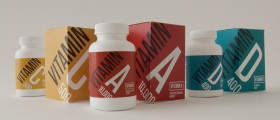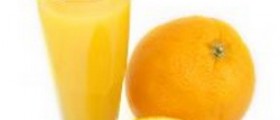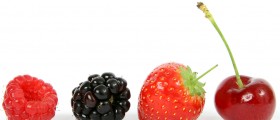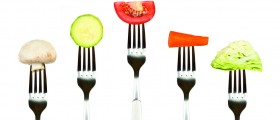
Vitamin K is a group of fat soluble vitamins. All types of vitamin K fall into a large chemical category of substances called naphthoquinones. There are two basic types of vitamin K: phylloquinones, made by plants, and menaquinones, made by bacteria. Up to 90 percent of our dietary vitamin K comes for phylloquinones from plant foods. Fat-soluble vitamins are absorbed through the intestinal tract with the help of lipids. This type of vitamins is more likely to be accumulated in the body, and thus more likely to lead to hypervitaminosis than water-soluble vitamins. Over a half of our dietary intake of vitamin K comes from vegetables, especially the green leafy vegetables. Vitamin K in the form of menaquinones, is being made by different types of bacteria in our intestines.
Health benefits of vitamin K
One of the primary roles of vitamin K is to regulate healthy blood clotting. Even the name of this vitamin is derived from this feature. The letter "K” originally came from the German word koagulation, which means “clotting of the blood”. Furthermore, vitamin K protects the bones from weakening or fracture. It is especially beneficial for women who have passed through menopause. Vitamin K prevents bone loss, risk of fracture and preserves bone density. Vitamin K may also prevent calcification of blood vessels or heart valves, which causes hardening of the tissues and outbreak of many cardiovascular problems.
Other health benefits of vitamin K include protection against oxidative damage, proper regulation of inflammatory response and support of brain and nervous system structure.
Sources of vitamin K
Excellent sources of vitamin K include: spinach, Brussels sprouts, Swiss chard, green beans, asparagus, broccoli, kale and mustard greens. Very good sources include green peas and carrots. Fermentation of foods can further increase their vitamin K content. Fermented soy is an excellent example known to supply vitamin K in certain traditional cuisines. Some cheeses, such as those like Emmental and Norwegian Jarlsberg, are also fermented in a way that optimizes their vitamin K content. Many sorts of lettuce contain valuable amounts of vitamin K. Romaine lettuce has the highest amount of vitamin K in the lettuce family. Generally, foods are higher in vitamin K if they are used in concentrated form mixed with water. For example, tomato paste is higher in vitamin K than fresh tomatoes.
The adequate intake levels for vitamin K is 120 micrograms for adult males and 90 micrograms for adult females. Two tablespoons of fresh parsley are enough to satisfy as much as 153.8% of recommended daily value for vitamin K.

















Your thoughts on this
Loading...